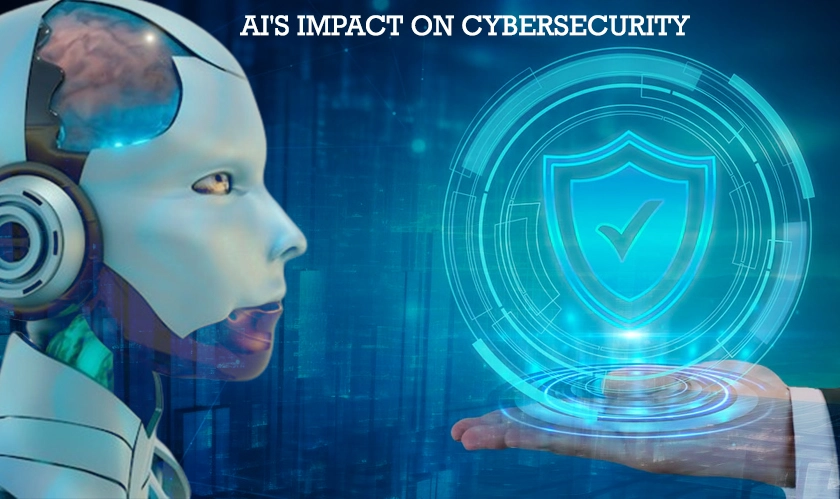Home Technology Artificial intelligence Unveiling the Future: AI's Imp...
Artificial Intelligence

CIO Bulletin
23 April, 2024
As AI continues to advance, its application in cybersecurity becomes increasingly crucial. By leveraging machine learning algorithms and predictive analytics, AI systems can detect anomalies and patterns that may elude traditional security measures. This deep dive into the technological trends of AI and its potential in cybersecurity signifies a shift towards more adaptive and intelligent defence mechanisms to safeguard sensitive data and infrastructure from malicious actors.
Exploring the Promises of AI in Cybersecurity
Approaches to AI Integration
Implementing a gradual integration strategy is essential to fully using AI's promise in cybersecurity. This plan calls for progressively integrating AI capabilities into the security architecture that is already in place while carefully examining and verifying their efficacy. Organisations may reduce risks and guarantee a seamless transition to AI-powered products by adopting small, gradual measures. This strategy is similar to earlier tech adoptions (e.g., big data, machine learning), where early adopters profited from the gradual, planned use of these advances.
Companies may address certain use cases and customise AI technologies to meet their cybersecurity requirements by using a staged integration strategy. It also offers a chance to evaluate how AI will affect current workflows and procedures, making sure that they are in line with strategic goals. Organisations may minimise disappointment and optimise return on investment by using AI with a hypothesis-driven strategy that establishes explicit objectives and success indicators.
AI in Cybersecurity: The Next Stage
The cybersecurity industry is prepared to advance to the next stage of growth now that it has embraced early AI capabilities. Machine learning has been essential in laying the groundwork for future AI integration, particularly in the fields of threat detection and endpoint security. The next phase of AI adoption in cybersecurity requires similar approaches and ways of thinking to the early adoption of machine learning. While the most attractive applications of AI may take some time to emerge, businesses that successfully integrate AI into their present operations could anticipate significant advancements by 2024 and beyond.
AI-powered cybersecurity solutions can improve the precision of threat detection, automate tedious operations, and provide reactions to new threats. Organisations may keep ahead of cybercriminals by using AI algorithms to analyse large volumes of data and spot patterns suggestive of nefarious behaviour. AI may also support human analysts by offering contextual insights and suggestions, which can help them make better decisions under duress.
AI Adoption - Cyber Areas
As AI technologies advance, some cybersecurity applications are especially well-suited for deployment. Early indications point to enhanced threat intelligence and security operations employing AI investigative skills. These developments are poised to be used, particularly in data-intensive fields where artificial intelligence can support human analysis. Businesses may strengthen their cybersecurity posture and respond to changing threats by incorporating AI with more data sources and optimising decision-making procedures.
By streamlining regular processes and speeding up incident reaction times, AI-powered solutions may also increase the efficacy and efficiency of security operations. Security teams may focus on higher-value work by using AI-based security orchestration tools, which, for instance, can expedite the detection, investigation, and remediation of security events. Organisations may increase their resilience and agility against cyberattacks by utilising AI technology.
AI TRiSM Frameworks
Making decisions in the complicated world of cybersecurity is frequently risky and unpredictable. The AI TRiSM framework unifies common components into a single AI framework, providing an organised method for streamlining decision-making. The fundamental elements of this framework are transparency, robustness, security, and monitoring (TRiSM), all of which are necessary for efficient risk management in the digital era.
Transparency gives clarity on how algorithms arrive at conclusions and guarantees that judgements made by AI are explicable and comprehensible. Robustness is the capacity of AI models to withstand adversarial assaults and anomalous data, which guarantees dependability in practical applications. Security deals with defending AI systems from intrusions and illegal access, and preserving infrastructure and private data. Monitoring is the ongoing supervision of AI systems to identify and reduce possible dangers or biases.
Firms may improve their risk management skills and make better judgements in dynamic and unpredictable situations by using the AI TRiSM framework into their decision-making processes. The integrity and dependability of AI-driven decision-making processes depend heavily on the regular use of TRiSM, particularly when things are stressful.
How to Handle the Cybersecurity Hype
It's critical to discern between hype and reality as businesses investigate the potential of AI in cybersecurity. AI can completely transform cybersecurity, which has much excitement, but it's important to approach it realistically. Organisations have to concentrate on utilising AI's defensive skills to bolster their security posture, instead of obsessing over dangers created by AI.
Critical thinking and a good dose of scepticism are necessary to navigate the hysteria around cybersecurity. It's critical to evaluate AI solutions according to their applicability in the real world and fit with the objectives of the company. AI is not a magic bullet for all security issues, even while it offers a great deal of potential for improving cybersecurity skills. Alongside AI integration initiatives, organisations must give top priority to fundamental security measures, such as vulnerability management and personnel training.
Summary
In the end, implementing AI integration in cybersecurity requires a balanced strategy, which is essential for success. Through the integration of security best practices and AI-driven innovation, enterprises may optimise AI's advantages while reducing associated risks. Artificial Intelligence can completely transform cybersecurity and enable organisations to remain ahead of ever-changing dangers in the digital age with proper planning, strategic deployment, and continuous assessment.







